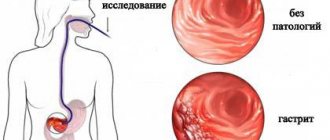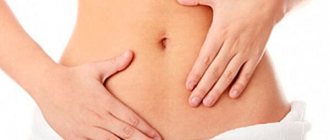Almost every parent of a newborn baby faces a problem such as flatulence. Why gases occur in a newborn, what to do to alleviate the baby’s condition - every mother should know this information. After all, flatulence can torment a baby up to the age of three months. But this problem is easy to deal with.
Often, due to gases, the baby suffers from colic. Colic is a sharp, strong spasm accompanied by bloating and rumbling in the baby's stomach. This is why the baby may suddenly cry and scream uncontrollably until the spasm subsides. To effectively combat this problem, you need to know the main causes of flatulence and colic in infants.
What is intestinal colic
If you delve into the essence of such a medical term as colic in general, you can imagine what happens to a newborn at such moments. Colic is not only intestinal. By its pathological nature, this is a sharp spasm, immediately followed by a sharp pain that quickly subsides. And it resumes immediately. Such attacks with sharp, recurring pain can last for almost three hours at a time. Pinch your arm really, really hard about ten times. This is approximately what a newborn feels in his tummy.
Doctors call one of the supposed (and most probable) mechanisms for the occurrence of such pain the following:
- The wall of the small intestine sharply becomes toned.
- Peristalsis increases.
- Unexcreted feces and excess gas bubbles put pressure on the intestinal walls.
- A sharp spasmodic pain appears in the abdomen, which either “releases” or “grabs” again.
Prevention
To prevent colic, the following rules must be followed:
- Each time after feeding the baby, you need to hold it in an upright position for a little while.
- Give your baby preventative herbal teas (you should consult your pediatrician before use).
- Review your diet as a nursing mother, giving up sauerkraut, beans, dairy products, fast food and carbonated drinks.
- Choose a high-quality formula for your baby.
- Avoid overfeeding.
Colic in a newborn is a problem that rarely avoids anyone in infancy. Therefore, during this period, parents need to join forces and be patient until the baby is 4 months old (perhaps earlier or later, it’s different for everyone). To reduce the symptoms of colic, the child can be given special medications or just get by with massage. As a preventive measure, it will be useful for a nursing mother to follow a diet, limiting the consumption of fatty, salty, spicy and overly sweet foods. These measures will help you get through such a difficult time and alleviate the baby’s suffering.
Intestinal colic causes a lot of inconvenience and problems for babies. Therefore, effective advice on how to deal with colic in newborns will be useful to every young mother. Doctor Komarovsky tells.
The reason for all those nights when you don't sleep, the inconsolable crying and the baby's feeling of discomfort, fatigue, irritability and the cause of the feeling of helplessness, as a rule, is colic. Infant colic is caused by several factors that you can control to reduce it and even prevent it completely.
Symptoms
The main and most distinctive sign of colic is the baby's cry. It is this cry that you will not confuse with a cry of hunger or discomfort, or with whims, or with anything. SO a newborn will cry only and exclusively during colic, mothers with experience understand exactly what we are talking about, and mothers without experience will soon themselves remember the notes and decibels characteristic of this crying.
The second distinguishing feature is that this scream cannot be stopped. Nothing helps. The baby screams with the same “intonation” both in the crib, and lying on his tummy, and in his mother’s arms, and in his father’s, and in his grandmother’s, and after changing the diaper. He yells, despite all your efforts to please him.
In addition, there are specific medical symptoms of this phenomenon in infants:
- the stomach hardens, as if it is bursting from the inside;
- the baby writhes, clenches and unclenches his fists;
- the baby sharply pulls his legs towards his tummy, bending them at the knees, and just as sharply straightens them;
- some children stand tall, arching their backs;
- There are gases leaving all the time and there are quite a lot of them.
When a newborn has gas, what should parents do?
So, having noticed flatulence in a child, the question arises: how to help a newborn with gas, what to do. A detailed answer to this question is usually given by doctors in clinics. They help determine the cause of flatulence and suggest how to eliminate it. However, it is not always possible to visit a doctor.
There are several options for how to remove gas from a newborn. From them you can choose the one that suits you individually. They are based on physical exercise, taking “homemade” medications and changing the baby’s position after feeding.
Babies sometimes experience colic
Sometimes attacks of gas formation in a baby are inevitable. This condition of the child can cause concern among parents. But there are several methods that often help newborns from gas.
Massage
Many parents prefer this non-invasive and relaxing technique for getting rid of gas.
Massage can be applied approximately 30 minutes after feeding or when symptoms appear:
- Step 1: Place your baby on his back. You can start by moving your legs in a few circles, similar to how a baby rides a bicycle. This will help the baby release gases;
- Step 2: Massage your baby's belly.
Make gentle stroking circular movements in a clockwise direction. Your touch will help soothe the baby and move gas along the intestines. The intestines “work” clockwise, so this is the best direction for massaging movements. Don't press too hard. This should not cause pain to the child; - Step 3: Place baby face down, stomach on lap. Gently move your legs to massage your belly. This slight pressure will help move the gas. You can also gently pat the back.
Infant massage can relieve your baby's tummy troubles and it won't take much time.
There are three types of antigas medications, and each works differently:
- Simethicone.
Simethicone is a drug that is marketed as a gas reliever. The medicine binds the gas bubbles together, which, in theory, makes it easier for them to escape. Simethicone preparations typically contain synthetic ingredients such as artificial colors and flavors, as well as emulsifiers and fillers. Simethicone was not particularly effective in several studies; - homeopathic remedies. Homeopathic medicines contain natural active ingredients that provide safety for newborns and provide effective relief. Unlike simethicone, homeopathic remedies do not require constant dosing;
- probiotics.
New research suggests that supplementing with an infant probiotic will alleviate some infant gastrointestinal problems when given over a period of several weeks. If your baby is introduced to complementary foods, give him some yogurt. It will fill your baby's intestines with various strains of beneficial intestinal bacteria.
Causes
Doctors identify several main reasons why newborns may experience sudden and prolonged attacks of spastic pain:
- Immature digestive system. Until the moment of birth, the baby ate through the umbilical cord. It’s like an IV - all the nutrients necessary for life and growth enter directly into the blood, bypassing the gastrointestinal tract. After birth, the baby begins to eat like an adult, food enters the stomach, then into the intestines. And from there the nutrients are absorbed into the blood and distributed throughout the body. The intestines are not accustomed to such a load; before this, its “ceiling” was the digestion of amniotic fluid, which is many times “lighter” in composition compared to breast milk or formula.
- Immature intestinal microflora. Yes, tiny bacteria enter the intestines. If you breastfeed - from your nipple and skin, if artificially - they are part of the mixture. It is the bacteria that are responsible for normal digestion in a newborn. But it happens that there is a lot of food, but not enough beneficial microorganisms. All food that they “didn’t have enough energy to process” stagnates, spoils and leads to high gas formation, which irritates the delicate walls of the intestines.
Errors in mother's nutrition during breastfeeding. If you are on a strict diet, good. Whatever goes into your stomach ends up in your milk. Even if your diet is ideal according to doctors’ standards, not every product will “suit” the baby, you can’t guess - all newborns have their own “whims”. What can we say if we ate even a piece of deliciousness from the “forbidden” menu.
- Newborns' rejection of cow's milk protein. This applies to artificial people. The fact is that the lion's share of mixtures is produced on the basis of cow's milk. Its protein coagulates in the stomach into large lumps, and if the newborn’s body is unable to cope with them, problems will arise not only with colic.
- Lactase deficiency. Lactase is an enzyme that is actively involved in the processing of any milk, mother’s, cow’s, or formula. It is he who curdles milk in the stomach, making its further digestion possible. If there is a lack of enzyme, milk is not completely digested, which causes bloating with cramping pain in newborn babies.
Medicines
A pediatrician can prescribe several groups of medications or dietary supplements for the treatment of infant colic (you can read about the causes and symptoms of colic here). We have made a brief overview of these tools.
Contains probiotics
In 1994, scientists suggested that the cause of the painful spasmodic state may be intestinal dysbiosis. Therefore, probiotics have been used in pediatric practice to treat colic. Today there is a lot of debate about the advisability of their appointment. A clear benefit in the fight against colic has not been proven, but they do not cause harm, and if the baby also suffers from constipation, taking them is very useful.
Hilak Forte is often prescribed as a probiotic for children.
Most often, a dosage form in the form of drops is used for newborns, but probiotic preparations are mainly prescribed in capsules. In infancy, the acidity of the stomach and intestines allows you to take the medicine by first pouring the powder from the capsule into a spoon and diluting it with water. Famous representatives:
- Bifiform Baby,
- BioGaya,
- Hilak Forte,
- Linux,
- Bifidumbacterin.
Based on simethicone or dimethicone
The substance dimethicone plays the role of an antifoam. It reduces the surface tension of gas bubbles by grouping small bubbles together and causing them to burst. This way the gases are released more easily. Due to its inert nature (dimethicone is not absorbed, does not enter into chemical reactions, and is excreted unchanged from the body), it is quite safe and approved for use from 2 to 3 weeks of life.
Espumisan is one of the most popular drugs for the treatment of infant colic.
Simethicone (silica-activated dimethicone) works in the same way. The drugs are available in the form of a suspension, so be sure to shake the bottle well before each use. Such medications can be taken for a long time, as long as needed. Representatives:
- Espumisan L,
- Bobotik,
- Sub Simplex,
- Colikides,
- Infacol,
- Kuplaton (dimethicone).
In all of the listed products, with the exception of Kuplaton, the active ingredient is simethicone.
Enzyme preparations
Enzymes are prescribed to improve the digestive process, especially if stool tests are not very good. The decision to give such drugs to a small child is made solely by the doctor. For children, capsule forms are used:
- Creon,
- Pangrol.
Herbal remedies
Herbs have long been used to relieve spasms and colic. For example, chamomile has a pronounced anti-inflammatory and antispasmodic effect. Fennel and dill are known as carminatives that relieve spasms. Therefore, modern treatment also includes the use of herbal preparations:
- Bebinos. It contains extracts of chamomile, coriander seeds and fennel.
- Plantex is actually fennel.
- BabyCalm contains extracts of vegetable oils of mint, anise and dill.
It is important to know that Plantex sachets contain lactose, so they are not suitable for children with lactase deficiency. Anise and mint can cause allergies, so drugs based on them should be given with extreme caution. Finally, if the drops contain ethanol (alcohol), they should not be used for a long time.
Modern “dill water” in bags
Some give a medicine “from the past” - activated carbon. A quarter of the tablet is crushed, mixed with water and given to the baby from a spoon. But there are pitfalls here. The fact is that such a harmless medicine as coal absorbs not only dangerous and foreign substances (in our case, air bubbles), but also useful ones. Taking it regularly may cause problems with nutrient absorption. Therefore, coal can only be used as an ambulance.
If you have been prescribed a whole list of medications, do not rush to take everything, start with one or two medications. This way you will have the opportunity to understand what really helps and what doesn’t.
Treatment
Pediatricians for the most part believe that colic in newborns is an unpleasant phenomenon, but not eternal. The child “outgrows” them in any case. But you can significantly alleviate the condition of a newborn. The main thing is to identify the reason:
- You won’t change the immaturity of the gastrointestinal tract in any way, you can only wait and give the baby carminatives for easy passage of gas if;
- the reason is in the mother’s diet - just control yourself and eat something that doesn’t make the baby’s tummy hurt;
- the problem is in the formula - change it, find one that is made on the basis of goat's milk, it is absorbed better by children;
- a newborn is diagnosed with lactase deficiency - it is important to switch to specialized formulas that solve this issue.
In any case, it’s worth remembering a couple of classic tips to help prevent this problem in newborns:
- apply the newborn to the breast correctly, use a special nipple for the bottle - the child should not swallow excess air when feeding, he is not doing well anyway;
- Before each meal, place the baby on his tummy for 10-15 minutes;
- after feeding, carry the newborn in a column until he burps up excess air;
- periodically massage your tummy, stroking it clockwise.
In fact, there are many such “tricks”; each child has something different that helps them. This is just a list of the most popular and effective techniques.
How to help baby with colic
— Please tell us about nutritional correction if the baby is breastfed.
— We talked about cow’s milk intolerance earlier. In general, the nutrition of a nursing mother should be varied, complete and sufficient. Mom does not need to eat for two, because she will quickly gain excess weight and have difficulty returning to normal after breastfeeding. At the same time, mother should not starve. Vegetables, fruits, berries, olive oil, meat, fish - the diet of a nursing mother should meet her daily needs. If an older child has a food allergy, you need to be careful about your diet when feeding your younger one: try a little food and observe the baby’s reaction.
— What to do with colic with food if the baby is mixed or bottle-fed?
— When selecting infant formula, the doctor is guided by an examination and the condition of the child. The most important indicator of any formula is compliance with the composition of mother’s milk
. Manufacturers add prebiotics and probiotics, iron, calcium, lutein and other ingredients to infant formula to make it as close as possible to the composition of breast milk.
Artificial feeding is when the baby eats only formula. Mixed feeding or supplementary feeding - when the mother does not have enough milk and partial nutrition is used (the baby is supplemented with infant formula).
— Is it possible to give goat milk formula for colic?
— It is impossible to determine in advance how a child will tolerate this or that milk. Approximately 9% of children do not digest cow's milk
, but they tolerate goat well.
With the help of the mixture, manufacturers try to make the child’s digestion as easy as possible. But for the mixture to become an effective assistant, it must be selected with a doctor. A mixture for comfortable digestion
goat 's milk, which has a beneficial effect on the formation of soft stools, for example, MAMAKO® Premium*, can cope with colic. These are mixtures for feeding healthy children, which provide comfortable digestion and prevention of functional disorders of the gastrointestinal tract, including colic.
Doctor Komarovsky about colic in newborns
As you know, the famous pediatrician very often holds a slightly different opinion about the problems of children than classical post-Soviet medicine. For example, Komarovsky immediately notes that newborns do not have colic at all; they appear in infants at the age of two or three weeks, not earlier.
The doctor's position on the symptoms is the same - he agrees with a hard tummy, flexing of the legs and crying. Komarovsky confirms that you will not confuse this cry with any other, moreover, he claims that it is this childish sound that can bring a mother to real panic or even aggression, especially during the period of postpartum depression. That is why he urges fathers not to leave mothers alone with their newborns during such periods - a woman needs support in such moments more than ever, and the baby needs the calm of his mother.
As for the reasons for this phenomenon, Komarovsky claims that they are still not known to pediatrics. He considers everything described above to be just guesses and assumptions.
The only circumstances to which the famous doctor attributes the occurrence and exacerbation of such attacks are:
- overheat;
- overfeeding
According to Komarovsky, if a newborn is wrapped in a hundred clothes and his body experiences hyperthermia every day, this not only provokes abdominal pain, but also becomes the cause of other unpleasant phenomena in the future. Overfeeding the baby also does not bring anything good.
If you eat exactly as much as the body needs, it is normal to gain weight, then the stool of a newborn during breastfeeding will be normal, and attacks of pain will be avoided or at least made less frequent and prolonged.
Otherwise the picture is very unpleasant. The child’s intestines cannot absorb excess milk; it spoils there and provokes increased gas formation. And if at the same time the little one is also dressed in a hundred fur coats, not only will there just be colic, but the baby will also be in pain many times more severely and for longer.
Folk remedies
Until now, many parents use traditional medicine recipes to relieve their children of discomfort.
The most popular remedy is dill water.
To prepare it, pour a teaspoon of plant seeds into a glass of boiling water and keep in a water bath for 20 minutes.
The resulting broth is infused under the lid for 45 minutes and filtered.
Give the baby one teaspoon of dill water three times a day.
Fennel infusion also helps to cope with increased gas formation. Pour boiling water over a teaspoon of seeds, cover and leave for half an hour. The infusion is taken several times a day, one teaspoon.
Treatment of colic in babies - advice from Dr. Komarovsky
Regarding all possible solutions to the problem, Komarovsky is categorical in several positions:
- Basically, it is not the newborn who needs help, but his parents;
- colic is not a disease to be treated;
- you can do whatever you want, the main thing is not to harm the child;
- the pain will go away today, it will go away tomorrow, and after three months of “torment” you will forget about them altogether, no matter what you do with them.
However, the pediatrician pays special attention to some controversial issues of assistance with this problem.
About feeding - advice for mothers
- The most important thing is not to overdo it. Overfeeding is much more dangerous for a baby than a slight feeling of hunger. Komarovsky is categorically against the new fashionable method of feeding a newborn “at the first squeak.”
- There should be more or less equal periods of time between feedings, at least two to three hours. Of course, every mother knows exactly how to feed her child; even the recommendations of specialists are not a decree for her.
- But the doctor insists that excess milk or formula fed to the baby will still not be absorbed. Therefore, the first way to combat colic is not to overfeed your newborn.
About mother's nutrition - advice for women
- There is an opinion, and in some ways it is justified, that a mother’s diet is directly reflected in her milk. But children's doctor Komarovsky is entirely on the woman's side in this matter. Yes, a certain diet is important when breastfeeding; you should not eat fast food and wash it down with soda.
- If the question of how to lose weight after childbirth worries you more than your desires, please, after all, a healthy diet has never harmed anyone. But you shouldn’t force yourself into strict food boundaries.
- A woman after childbirth is already all on edge, and then the baby also has problems. Add to this a wild list of food prohibitions, and what kind of normal mother and healthy woman can we talk about in this case?
About motion sickness
According to Komarovsky, it does not help. No amount of rocking, carrying, or lisping helps the child. He still yells. But if you start rocking your little one in your arms, and within 10 minutes he still stops yelling, this does not mean that the doctor was wrong. The pediatrician believes that this means only one thing - the child did not have colic, he just wanted to see his mother.
The phenomenon of colic comes and goes suddenly, no matter where the baby is or what the mother does with him.
About laying on the tummy
Of course, placing a newborn on his tummy is a very useful activity. Komarovsky wholeheartedly agrees that in this situation the gas tanks move away quite quickly and easily. But no matter how many times a day you do this, it will not affect the appearance or non-appearance of infant abdominal pain at all.
And during an attack, putting the baby on his tummy will also not help at all.
Crying or colic?
Diagnosing colic is difficult because in the first months the baby cries a lot, adapting to life outside the womb. The “normal” crying pattern includes crying for an average of up to 2 hours a day during the first 6-8 weeks of life. Colic, however, goes beyond “normal” crying and is a constant or excessive cry that disrupts the well-being of both the baby and his parents.
The guideline used to differentiate what is colic and what is “normal” crying is the “rule of three.” If your baby cries more than three hours a day, more than three days a week, for more than 3 weeks in a row, then it is most likely colic. A cry with colic usually begins suddenly, the epicenter of the cry is in the evening hours. The scream is more intense and of a higher pitch. You should exclude hungry crying, crying with constipation, wet diaper, increased body temperature, discomfort - hot or cold, flatulence.
If the "rule of three" and the list of exceptions don't apply to your baby, then it's probably colic.
Basic advice from Dr. Komarovsky
All that modern medicine knows about infant colic is that such a problem exists. Not a single doctor will tell you the reason why your child has these pains. But the famous doctor gives universal recommendations on how to survive this difficult period in the life of a newborn:
- Do not overheat the baby, do not put a lot of clothes on him, and if you swaddle him, do not do it too tightly.
- Regularly ventilate the room in which the little one is located, make sure that the temperature is comfortable (18-20°C) and the air is not dry.
- Watch your diet, but don't force yourself into strict limits.
- Maintain intervals between feedings and do not overfeed your baby.
- Do not engage in experimental searches for a solution to the problem, especially if this may harm the baby.
- There are no medications that can cure colic once and for all; any medications in this matter help the parents more than the baby.
- Delegate some of your responsibilities to the baby’s grandmothers and father, try to rest.
But the most important thing is not to irritate the child again. All he needs is a calm, content, rested mother and a calm, loving father. Give it to him. The pain will go away regardless of any external factors. The main thing is to maintain the peace of mind of parents during this difficult period.
Why does a baby have gas?
When faced with such a problem as gas formation in newborns during breastfeeding, the first thing you need to do is consult a doctor.
A specialist will help determine the reason why a child is susceptible to flatulence. Typically these reasons are:
- A nursing mother does not follow a diet and consumes foods that are “forbidden” for nursing women during the breastfeeding period. This is how harmful additives appear in milk, which provoke the formation of gas.
- Excess milk entering the baby's body. Too much is not good. The excess begins to “ferment”, due to this fermentation carbon dioxide is formed.
- Lack of lactose in the composition. If the mother’s body does not produce a sufficient amount of this enzyme, then the child’s digestion process will be somewhat disrupted.
- Insufficient activity of the child. If you don’t take your baby for a walk or ventilate his room, he may develop physical inactivity. This will greatly affect the functioning of the gastrointestinal tract.
- Incorrect feeding. If the baby incorrectly clasps the mother's nipple with his lips when feeding, air enters the body along with the milk.
So, how do you release gas in a newborn?
The massage should be done with warm hands, easily. During this procedure, you need to talk to the baby - this will distract him from possible unpleasant and unusual sensations.
To make a “bicycle”, you need to lay the baby on his back and alternately bend his legs, lifting them towards his stomach. This exercise will help release gas.
Such procedures are especially important in the prevention of gas accidents. After feeding, you need to keep the baby in an upright position for about 10 minutes. This will help the baby burp all the air that he swallowed along with food.
You need to place your baby on his stomach regularly from the first days of life. This not only helps with gas, but also contributes to the normal development of the baby.
Dill water
This method of getting rid of gas is considered the most popular. The reason for this popularity is not only the effectiveness of the method, but also its low cost.
Dill water is a tincture of dill seeds. You can buy it at the pharmacy or prepare it yourself. To prepare it yourself, you only need half a glass of boiling water and a teaspoon of dill seeds.
Some medications, such as espumizan, bebinos, bebicalm and others, also have an effect similar to that of dill water.
Feedball
In the house in which the baby lives, there must be a large gymnastic ball. In case of gas, you need to place the baby on the ball with his stomach and perform springing movements. This can be done only in the absence of colic and spasms.
You should consult your pharmacist or doctor regarding the correct use of such attributes. They are especially effective because they have a direct physical effect, helping to remove gas and eliminate constipation.
Carry the child in an upright position, with his legs tucked in - this position promotes gas removal. A warm diaper will help relieve pain or at least reduce it.
Poor latching on the breast or bottle causes too much air to be swallowed while eating.
Crying may cause your baby to gasp for air, especially if he cries from hunger for a long period before eating. Since crying is both a symptom and a cause of gas, it can create a “vicious cycle” that makes the problem worse.
The human digestive system is so complex that it has its own nervous system, the enteric, which controls the transport of intestinal contents in a wave-like motion called peristalsis. A newborn's intestines continue to develop after birth.
He learns to efficiently process food, gas and form stool. Gas may also be present in a newborn due to the immaturity of intestinal microflora, carbohydrate metabolism and hormonal regulation. Gas in a baby can also be a symptom of constipation.
Breast milk contains food ingredients from the mother's diet. Some infants may be sensitive to these elements of the products. One study found a link between a mother's diet and colic symptoms. Maternal consumption of cow's milk, onions, cruciferous vegetables (such as cabbage, broccoli and cauliflower) and chocolate consumption were associated with more frequent symptoms of colic in children.
However, as a rule, there is no reason for a mother to restrict her diet. Especially if it's eating healthy food. If you suspect your baby has a food problem, try keeping a food diary to track symptoms such as baby's gas, vomiting, or fussiness. If you feel your baby is benefiting from dietary restrictions, talk to your doctor.
For a breastfed newborn, introducing hypoallergenic formula feeding may help if the baby reacts to cow's milk protein.
Breast milk is often divided into fore and hind milk. The foremilk, which is in the ducts closer to the exit, contains more sugar, lactose, and the next one, hind milk, is richer in fat.
Some experts believe that excessive consumption of foremilk results in a relative overload of lactose in the body. This can contribute to excess gas or fussiness in babies. Many lactation experts recommend trying to empty each breast before moving on to the next.
Overfeeding
Overfeeding can cause problems if the baby's stomach cannot handle large amounts of food.
Lactase deficiency
A temporary inability to obtain enough lactase enzyme, important for digesting lactose, has been implicated in some cases of colic or gas, but the link has not been proven.
New foods can cause gas in your baby as his intestines learn to process them. Excess foods high in sugar (juices, for example) can also cause your baby to have gas or looser stools.
Microbial imbalance
Our digestion is aided by literally trillions of beneficial bacteria (probiotics) that work with our digestive enzymes to efficiently break down food and nutrients.
Emerging evidence suggests that some healthy bacteria, such as Lactobacillus reuteri, may play a role in reducing gas.
Yogurts are also an excellent source of probiotics.
Several studies have shown that administering oral probiotics or probiotic products can help children with gas if taken over a period of several weeks. It is interesting to note that a breastfed baby experiences less gas, and this may be due to the presence of probiotics in breast milk.
Gastric ulcers occur less frequently in breastfed newborns than in bottle-fed infants. The baby can control the flow of milk at the breast; he suckles at a slower pace, swallowing less air with milk. However, even a breastfed baby needs to burp after every feeding.
Other ways to help relieve discomfort.
Swaddling
Many babies calm down when they are wrapped tightly in a blanket. Some pediatricians believe that swaddling mimics the sensations of newborns in the womb.
Many parents do not approve of this method. Most pediatricians have a negative attitude towards swaddling. Parents must ultimately weigh the risks and benefits.
Try the movement
The movement calms the child, helps to relax, and also release gas.
- baby rocking. Hold the baby in your arms and rock back and forth;
- go for a short walk around the block. A change of scenery and soft background noise will help soothe your child, allowing him to fall asleep. Also, when moving and gently bouncing the stroller, the gases pass faster.
Pacifiers
Some babies calm down when sucking on a pacifier, but vigorous suction on the pacifier may encourage excess air to be swallowed.
Make sure your baby is not hungry or asking for anything else when using the pacifier.
Give the child a bath
https://www.youtube.com/watch?v=ZyJpSZ7xUlQ
A warm bath with drops of chamomile or lavender oil will help your child relax and calm down.
Colic in newborns - video from Dr. Komarovsky
In this video, the famous doctor Komarovsky explains what colic is, how it manifests itself in newborns, and how to properly massage the abdomen when it appears. Watch this video, it will be useful for both moms and dads.
Colic is the most unpleasant, incomprehensible and, unfortunately, the most common problem among children aged from 2 weeks to 3-4 months. For some they begin earlier, for others later, some babies suffer less, others more. And some people don’t even know what kind of problem this is. Therefore, no one can say for sure what exactly provokes such attacks of abdominal pain. There are a number of drugs that, according to doctors and many mothers, help with colic. But this is not always the case.
Dr. Komarovsky believes that in this case the parents need medication more, just to calm down and try to help the little one at least in this way. But, nevertheless, he insists that colic is a temporary inconvenience that will go away on its own, you just need to be patient a little.
Which point of view do you agree with? Did your baby have colic? How did you solve the problem that arose? Share your experience in the comments, this will guide those parents who are faced with a problematic issue for the first time and simply do not understand what to do, especially since the opinions of experts differ so much. I wish you healthy babies and sound sleep without screaming and noise!
Tears don't just come from colic
In rare cases, at the age of 2 months, the baby's first teeth may erupt, which causes discomfort and, as a result, crying. Such situations are considered rather as an exception.
https://youtu.be/4yGQuMy2V0U
If you have doubts about the baby's crying, show him to the pediatrician and get examined by a surgeon to rule out an umbilical hernia. Consulting a neurologist and checking intracranial pressure will also not hurt. But in most cases, it’s enough just to be patient and go through this difficult moment in his life with your baby.
What is the disease?
This definition should be understood as a disorder of the digestive process in an infant, in which a somewhat swollen tummy is observed in combination with attacks of pain in the specified area. They can be easily identified by the sharp anxiety that the newborn shows: screaming, moving his legs, trying to press his knees to his stomach.
Most often, the child calms down immediately after the gas goes away or bowel movement occurs. These signs indicate that the cause of capricious behavior is a temporary lack of beneficial bacteria in the baby’s intestines. Although colic in newborns can occur at any time of the day or night, according to observations, they most often appear in the evening, especially for babies who gain weight very quickly.
If in the initial stages colic may bother the baby only a couple of times a week and last no more than 20 minutes, then in the future their intensity and duration increase. In the most active phase, colic bothers the baby almost every day and can last for several hours with short breaks. However, the presence of colic does not affect the baby’s stool or appetite.
Symptoms and manifestations
Intestinal colic, like many other uncomfortable conditions for a small child, manifests itself in crying and anxiety.
Dr. Komarovsky recommends paying attention to the following distinctive features:
- the child cries mainly in the afternoon and for no apparent reason (not hungry, not thirsty, does not want to sleep);
- When crying, the legs pull up to the stomach and gases escape.
In this case, the general condition of the child does not change, the temperature does not rise, loose stools and vomiting are not observed.
Causes
There are many reasons for increased gas formation. Sometimes the opinions of pediatricians are diametrically opposed, especially when it comes to the diet of a nursing mother and the diet of a newborn child.
Dr. Komarovsky indicates the following, the most significant causes of intestinal colic:
- imperfection of enzymatic systems, as a result of which the processes of food digestion are combined with rotting and fermentation;
- defective intestinal microflora, which is also directly involved in the processes of food digestion;
- imperfection of intestinal innervation;
- persistent smoking of a nursing mother;
- feeding the child too often or excessive amounts of food (especially when it comes to artificial feeding).
Dr. Komarovsky believes that the mother's diet does not have a significant effect on the occurrence of colic.
Prevention of colic
You always need to know what to do if your baby has colic. But it is also important to understand how to protect your child from their occurrence. Following simple rules will help avoid discomfort:
- Daily exercise helps improve digestion and reduces the risk of problems with the gastrointestinal tract.
- When breastfeeding, you should not eat grapes, cabbage, onions, cottage cheese, cheese, cucumbers and other foods that cause gas formation.
- In the morning you need to do a light massage with stroking for prevention.
- It is necessary to properly attach the baby to the breast so that he does not take in air.
Treatment of colic at home is available thanks to effective, natural folk remedies. If a child is suffering from gas formation, you need to do a massage and light exercises. Dill water, fennel, chamomile, and a salt heating pad help parents. It is important to follow the rules for using each product. If your health worsens and gas formation continues, you should consult a doctor.
https://youtu.be/9jceJx0Uf0w











